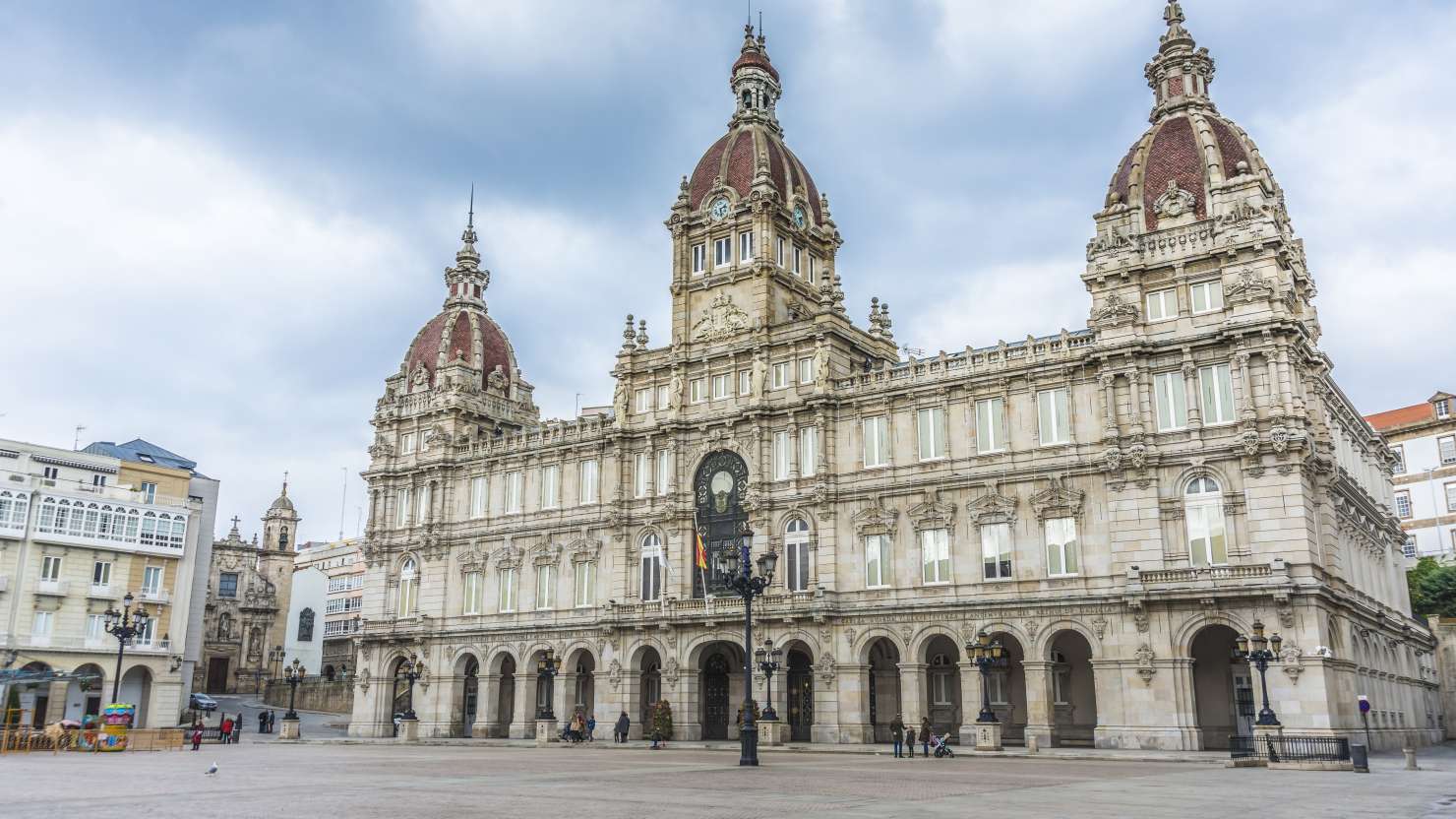Follow Arcadia around the world
Explore more on Destinations

Known as the ‘City of Glass’ for its elegant, sea-facing houses with glass-fronted galleries, from which anxious wives used to watch for the return of their sea-faring husbands, La Coruña is one of those small Spanish towns that exudes understated charm – and has something for everyone.

The Spanish Armada set sail from La Coruña in 1588, but these days the city’s maritime heritage is mostly contained in the symbol of the city – Europe’s oldest working lighthouse, the Tower of Hercules, which you can enjoy a photo opportunity at on the Leisurely La Coruña shore experience. Since the late first century, it has helped keep ships off the rocks of the rugged coastline. Extensive 18th-century renovations make for safe passage if you’re planning to climb its 234 steps – you’ll be rewarded with stunning views of the closest European port to New York. Fans of more recent history will find beautiful examples of Modernist architecture in the areas of Sada and Oleiros, where a trail leads to the romantic island and castle of Santa Cruz.

The Calle de Franja is a gourmet’s heaven, especially Mesón do Polpo (no 9) and O Xestal (no 38). In the tiny Xestal, a handwritten menu features a great range of seafood dishes like navajas plancha (grilled razor clams), while churrascos (grilled argentinian steak) and lacón con grelos (boiled ham, potatoes and turnip greens) should keep carnivores happy. For foodie friends, seed packets of the region’s most famous veggie dish, peppers di Padrón, make nice gifts, as does a bottle of the delicious local albariño wine, or the delightful queso de tetilla cheese; find both at the old-school delicatessens of the Ensanche district or the mouthwatering stalls of the central market.

To experience the ethereal beauty of Galicia, an excursion out of town is a must. A few miles east is the sheltered coast around Sada, while heading west towards Arteixo, huge Atlantic rollers batter the brooding Rías Altas. Along the way, densely forested inlets echo Norway rather than Spain, especially if you cross the Fornelos Hanging Bridge over the Eume River into Fragas do Eume Nature Park. Join the Hike through Atlantic Woods shore experience and you’ll take the walking trail through mixed woodland and gorgeous waterfalls to find the ninth-century Caaveiro Monastery.

For a town of less than 250,000 inhabitants, La Coruña offers a refreshing mix of museums – among them the Religious Art Museum, the Picasso House and Museum, and the Caixa Galicia Foundation, an art space designed by Nicholas Grimshaw. The thoughtful Regional Military Museum displays more than 1,600 objects from three centuries on what was the plot of the former San Francisco Convent, while in ancient stone fortress of St Anton, the Archaeological Museum offers everything from Celtic jewellery and Roman pottery to a Viking leather boat and a typical 18th-century kitchen. You can get a taste of the culture of this Spanish port on The Crystal City shore experience.

The interactive House of Mankind and a planetarium should keep little ones happy, but the star attraction for younger visitors – and fans of sea life – is the spectacular Aquarium Finisterrae. Right on the Atlantic Ocean and actually connected to it via some of its tanks, take a trip to the ‘Aquarium of the End of the World’ on the City Drive and Aquarium shore experience. Housing 600 species of marine life in a range of spaces that includes the largest tank in Europe, displays that include perennial favourites like seahorses, jellyfish and octopus are bolstered by two families of Atlantic seals and open tanks allowing little hands to touch starfish and turbot.

One of the charms of La Coruña is its manageable size, which you can experience on a Walking in the Old City shore experience. To really get a feel for the city, wander around the pretty old town, filled with cobbled streets and little squares radiating off the central square of Azcárraga, and see notable historical buildings such as the town’s two oldest churches, the Church of Santiago and Collegiate Church of Santa María del Campo, as well as the House and Museum of María Pita, the 16th-century heroine who became the city’s symbol of resistance. And literature fans will find lots to enjoy at the house of famed 19th-century poetess Rosalía de Castro.
of
Don’t miss out! Sign up for latest news, offers and competitions from P&O Cruises.